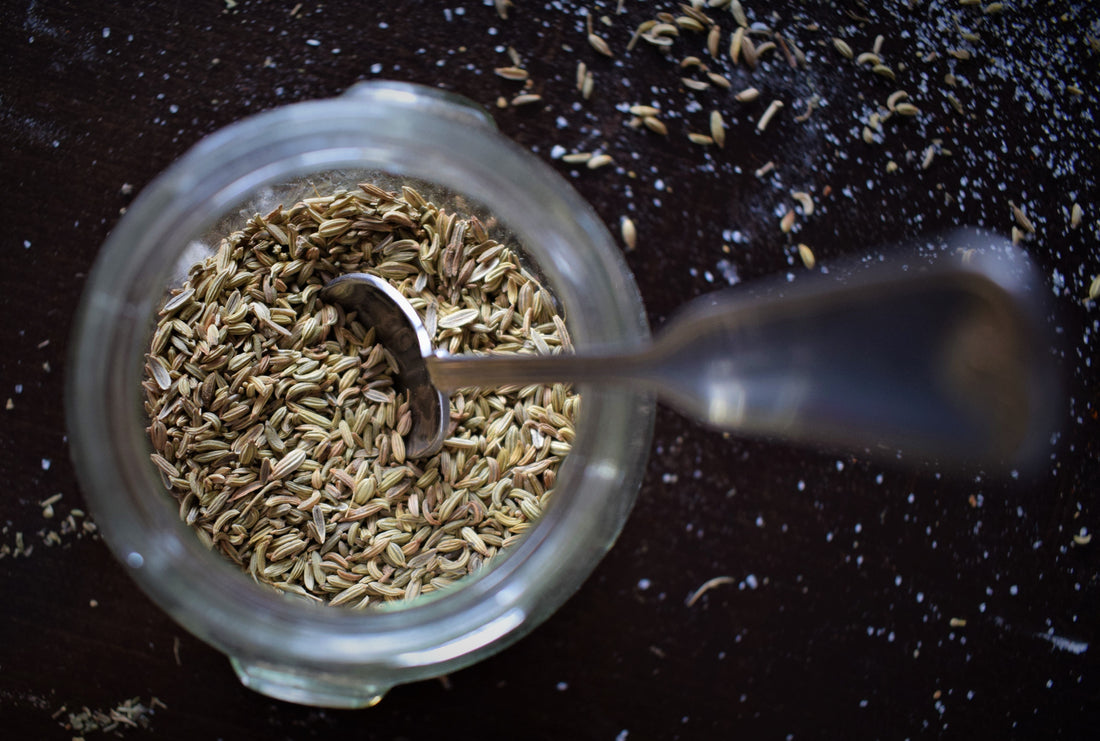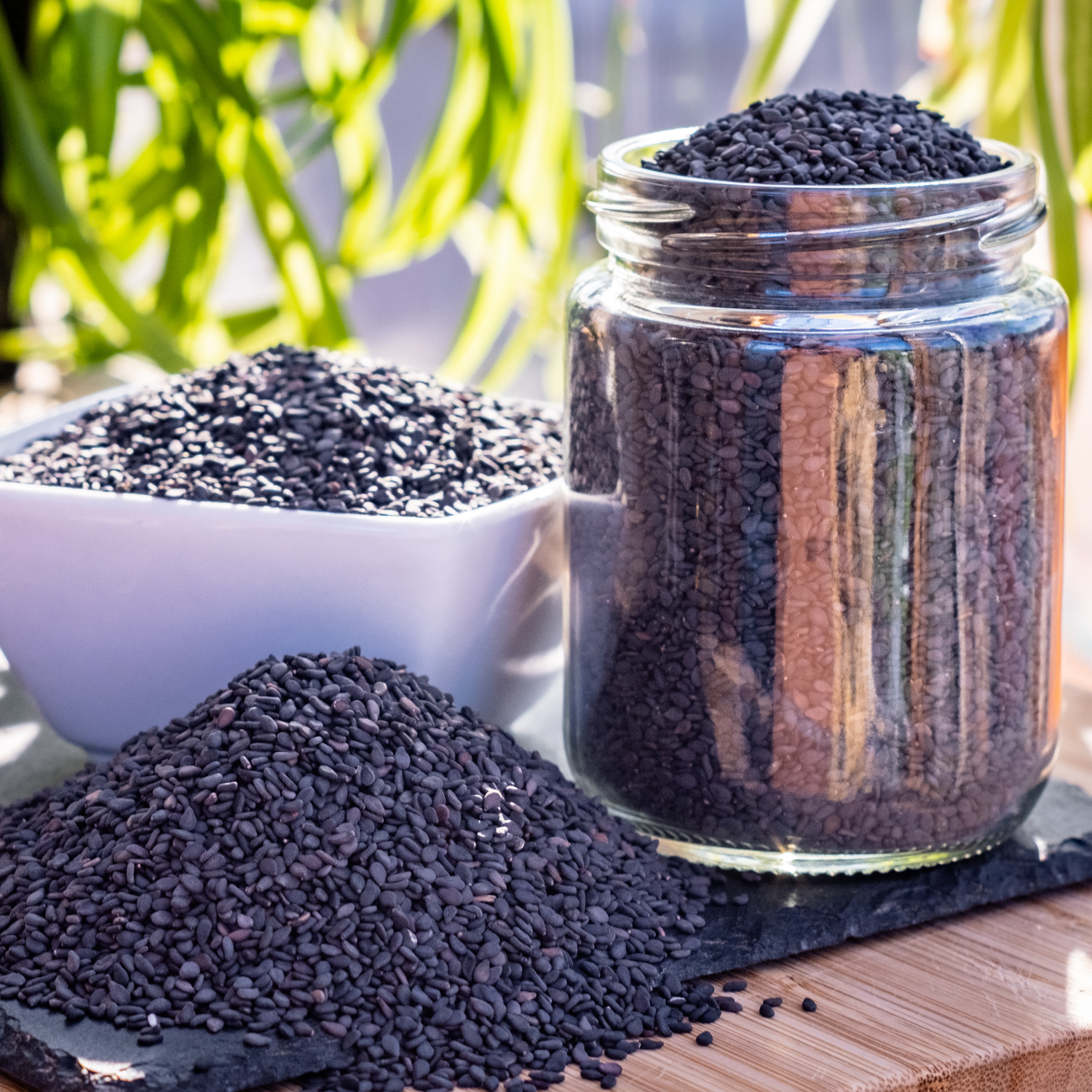
Cumin
Share

Had Humphrey Bogart and Ingrid Bergman actually walked the streets of Morocco while filming Casablanca—rather than the streets of a Warner Brothers Studios film set in California—the air around them would have been filled with the scent of Moroccan street food, with cumin being one of the chief aromas.
However, though strongly associated with Moroccan street cookery, cumin is not actually native to that country. The cumin plant, Cuminum cyminum, a member of the parsley family, is indigenous to Egypt and the Levant, where the spice has been used since ancient times in both cookery and mummification. “Cumin” is the only English word that can be traced back to the Sumerian language, one of the languages spoken in ancient Mesopotamia (modern-day Iraq), and the Sumerian word gamun, meaning “cumin,” was written down in cuneiform script more than 4,000 years ago. Tablets dating to 1750 BC (the Yale Culinary Tablets) show that the ancient Mesopotamians enjoyed food containing plenty of onions, garlic, and kamûnu, which means “cumin” in the Akkadian language. More than 800 years after the culinary tablets were written, cumin was mentioned in an inscription displayed in the palace of an Assyrian king. The inscription boasted of a feast the king served to celebrate the construction of his new capital.
Cumin was popular as a culinary spice among the ancient Romans. It is listed as a “pantry essential” in a cookbook dating to the late fourth or early fifth century, and is mentioned in a first-century Roman novel. In both the ancient Greek and Roman empires, the spice was also associated with women’s reproductive health. Ancient Greek medical texts from the late 500s and early 400s BC include cumin in a prescription meant to prevent the uterus from moving around the abdomen. A wandering womb was said to cause “hysteria.” According to Pliny the Elder’s Natural History, a Roman volume dating to the first century, a woman is more likely to become pregnant if she smells cumin during sex. Cumin also made its way into both the Old and New Testament.
The Romans brought cumin to much of Europe, and, after the demise of the Roman Empire, cumin’s popularity lasted throughout the Middle Ages. Cumin was believed to prevent both chickens and sweethearts from straying, and carrying cumin seeds throughout a wedding ceremony was meant to ensure marital bliss. King Henry III of England kept large quantities of cumin in his kitchens, and, throughout the thirteenth century, rent could be paid in cumin. By the time Christopher Columbus landed in the Americas, cumin was being cultivated in the warmer regions of the European continent. After introduction by Europeans, cumin became popular in Mexican and South American cooking. Cumin’s popularity spread east of the Levant as well as west. Cumin became an essential spice in Indian cuisine, and it is also used in southeast Asian dishes.
In fact, researchers consider cumin to be one of the spices that is most illustrative of culinary globalization. Throughout history, as people migrated around the world, they brought their own ingredients and recipes with them. Wherever cumin landed, it quickly found a place in local dishes, making it one of the most commonly used spices in the world.
Today, Cuminum cyminum is grown in North Africa, the Middle East, and India. Vanillablossom ground cumin is sourced from Egypt.
Cumin is a powerful spice best paired with other strong flavours that are not easily overwhelmed. In the Middle East and North Africa, where cumin originated, it is used in fish and meat dishes, stews, and couscous. In Europe, cumin is used in Portuguese sausages, and is added to wood burned to smoke certain cheeses and meats. It is used in pickling sauerkraut and in chutneys. Cumin is even one of the flavours in the German liqueur Kummel. In the Americas, cumin is popular in chili-based dishes, such as chile con carne. In India, cumin is commonly used in garam masala.
Though cumin can be purchased as a whole seed, these seeds need to be toasted in order to bring out the best of cumin’s warm, earthy flavour, making ground cumin more practical. Ground cumin does not need time or heat to deliver its flavour to food, and can be added at any point during cooking. In fact, cumin is commonly used as a table spice—like salt and pepper—in the Middle East.
Cumin is also still associated with women’s health; it is used as a herbal remedy to promote menstruation and relieve morning sickness. Cumin is also diuretic and antispasmodic, and can aid in relieving abdominal gas, indigestion, and diarrhea. It also contains antioxidant compounds, and is high in iron. Cumin may even improve blood cholesterol and blood sugar levels, and may promote weight loss.
Try Vanillablossom cumin in this stovetop chicken recipe!
Ingredients
4 tsp cumin
1 tsp Mexican oregano
1 tsp garlic
1 tbsp vegetable oil
2 boneless skinless chicken breasts, halved
½ picante sauce
¼ cup chicken broth
Salt to taste
Instructions
Combine 2 tsp cumin, with all the oregano and garlic, and sprinkle the spice mixture over both sides of the chicken breast halves. Heat the vegetable oil in a skillet, and add the chicken. Cook until chicken is browned. While the chicken cooks, mix remaining cumin with picante sauce and broth. Pour this mixture over the chicken. Bring to a boil, then reduce heat and simmer for 8-12 minutes. Remove chicken from the pan and cover to keep warm. Bring the sauce to a boil and cook until thickened, stirring to prevent sticking. Pour sauce over chicken and serve.
Try Vanillablossom cumin in this cumin rice recipe! This dish is a perfect way to *ahem* “spice up” an otherwise ordinary side dish.
Ingredients
1 cup basmati rice
2 cups water (plus extra for soaking)
1 tbsp butter
1 bayleaf
1 inch cinnamon stick
½ tsp cumin
¼ tsp cloves
½ tsp salt
1 green chili pepper, finely chopped
2 tbsp chopped fresh coriander
Instructions
Rinse basmati rice in a sieve until water runs clear. Soak rice in enough water that there is an inch of water on top. Soak for 30 minutes, then drain water. Melt butter in a pot and add green chili, cumin, cloves, cinnamon stick, bay leaf, and rice. Saute rice in butter for two minutes. Add water and salt to rice and stir well. Bring to a boil, then reduce to simmer until the water has evaporated. Remove cinnamon stick and bayleaf. Top with chopped coriander and serve.
Spicy Tip: Try using cumin as a table spice. Sprinkle sparingly on meat and vegetable dishes to add warmth and flavour.

